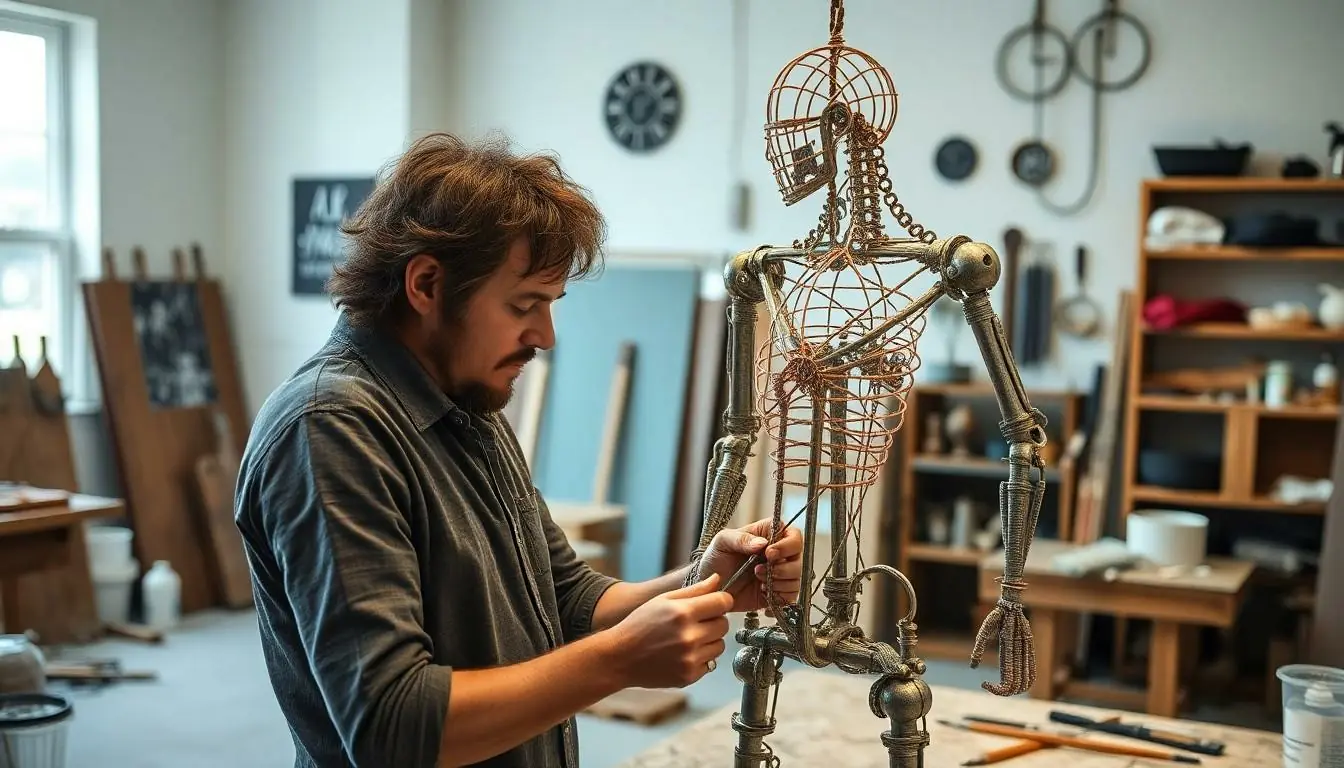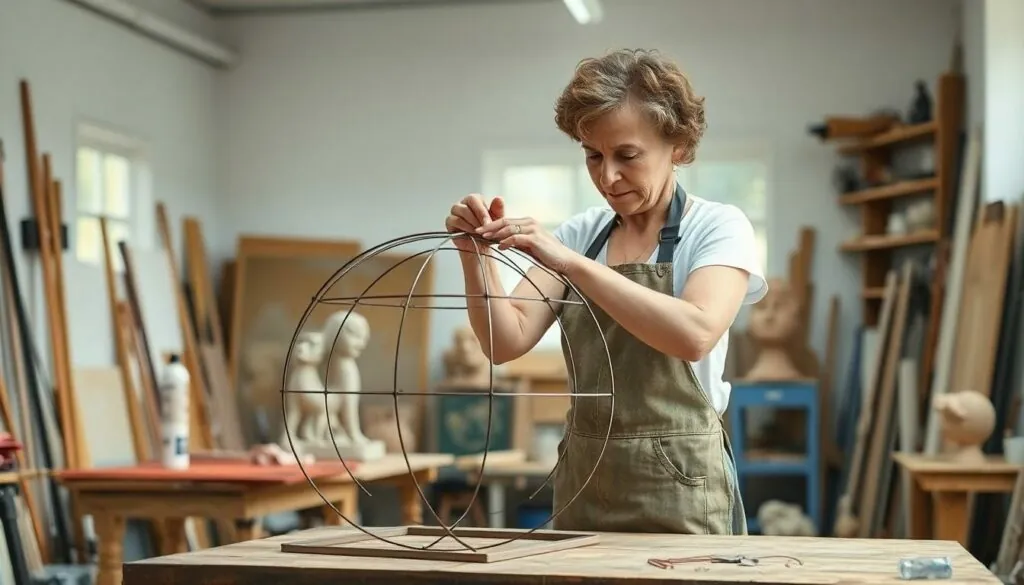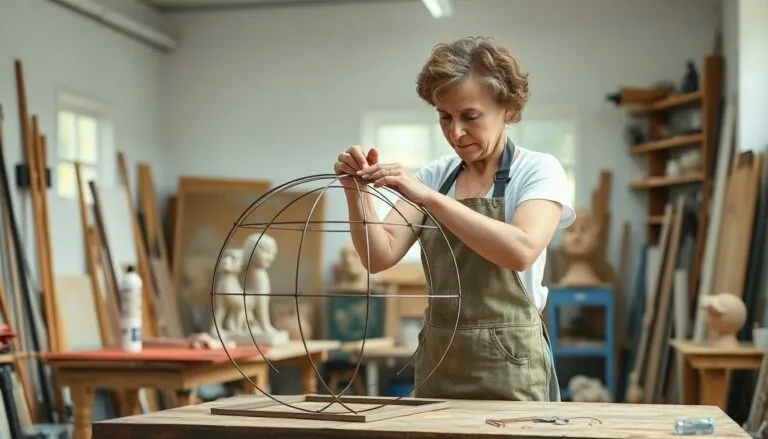Table of Contents
ToggleArmature sculpture might sound like a fancy term reserved for art school dropouts, but it’s actually the backbone of many stunning creations. Imagine building a sturdy skeleton for your artistic dreams—this is what armature does. It provides support, structure, and a bit of personality to your sculptures, turning a pile of clay into a masterpiece that even your grandma would proudly display.
Overview of Armature Sculpture
Armature sculpture involves using a support structure to enhance the stability of a sculptural piece. Artists create this framework using materials like metal, wire, or wood, ensuring the sculpture maintains its shape during the sculpting process. Strong support plays a crucial role in holding fragile materials such as clay in place, allowing for intricate designs and fine details.
Sculptors often design the armature to align with the sculpture’s final shape. He or she tailors the framework to accommodate specific features, which adds complexity to the work. Common armature shapes include organic forms and geometric structures, providing versatility for various artistic styles.
The choice of materials impacts the overall strength and weight of the sculpture. Metal armatures deliver durability, while lighter options like wire facilitate easy adjustments during the creative process. Concepts about balance and proportion guide artists when constructing these supportive structures, enhancing the visual appeal of the final piece.
In addition to functionality, the armature can influence the artistic expression of the sculpture. An innovative approach to creating the armature may reflect the artist’s vision, making it an integral part of the artwork. Sculptors frequently experiment with different armature designs to discover unique ways to convey their ideas, resulting in diverse sculptures seen in galleries and exhibitions.
Armature sculpture allows artists to expand their creative horizons while ensuring structural integrity. Designers prioritize this foundational element alongside raw materials, creating visually striking sculptures that engage viewers on multiple levels.
Importance of Armature in Sculpture

Armature plays a crucial role in sculpture, providing the necessary support and shape for the creation of intricate artwork. This foundational element is essential for both the structural integrity and artistic expression of a piece.
Structural Integrity
Structural integrity ensures that sculptures maintain their intended shape during creation. An effective armature safeguards fragile materials, preventing collapse or distortion over time. When artists use a well-designed support system, they enable detailed work without compromising stability. Additionally, the armature accommodates movements that occur during the sculpting process, allowing for modifications that enhance the overall design. Sculptors often find that this framework acts as a backbone, enabling them to explore complex forms confidently.
Supporting Materials
Supporting materials directly influence a sculpture’s durability and weight. Metal, wire, and wood each offer unique properties that enhance the armature’s effectiveness. Metal provides unmatched strength, ensuring stability for larger works. Wire, on the other hand, allows for easy adjustments and lighter weight. Wood can serve as a sturdy support, often combined with other materials for enhanced aesthetics. By selecting appropriate materials, sculptors create a balance between strength and visual appeal, thereby elevating the final sculpture. Each choice contributes significantly to both the artistic vision and the practical execution of the piece.
Techniques in Armature Sculpture
Armature sculpture techniques involve various approaches that define the look and functionality of a sculpture. Artists utilize different methods and materials to create a suitable framework for their designs.
Types of Armatures
Common types include skeletal, contour, and solid armatures. Skeletal armatures provide a minimal framework, ideal for delicate sculptures and allowing ample flexibility. Contour armatures offer a more defined outline and work well for pieces requiring specific shapes. Solid armatures provide strength and stability, often used in larger sculptures or those made from heavy materials like clay or plaster. Each type serves a unique purpose and enhances the overall artistic expression.
Construction Methods
Construction methods vary, offering distinct advantages to sculptors. Wire frameworks create light structures, allowing easy manipulation during the sculpting process. Metal armatures provide strength for larger pieces, ensuring durability in the final piece. Wood frameworks offer robust support and can be adapted for aesthetic purposes, especially when combined with other materials. Artists choose construction methods based on the desired outcome, balancing support and design intricacy.
Creative Applications of Armature Sculpture
Armature sculpture finds diverse applications, enriching artistic expressions in various forms.
Figurative Sculptures
Figurative sculptures rely heavily on armature for realistic representation. These structures support detailed features such as limbs and facial expressions, ensuring stability during the creation process. Metal armatures often serve as a skeleton, allowing artists to manipulate and create lifelike postures. Artists can build upon these frameworks using materials like clay to add intricate features and textures. Supportive armatures facilitate the exploration of dynamic poses, capturing the essence of movement and emotion. Diverse techniques in armature construction enable sculptors to experiment with styles, increasing the overall visual impact of their work.
Abstract Sculptures
Abstract sculptures showcase the versatility of armature in non-representational art. Artists utilize various armature types to create unique forms that challenge traditional perceptions of shape and structure. Wire armatures provide flexibility, allowing for intricate designs and whimsical expressions. When crafting abstract forms, artists focus on balance and visual intrigue, often combining different materials for aesthetic appeal. The armature’s framework supports experimental placements and orientations, enhancing the sculpture’s overall engagement. Sculptors harness creative freedom with armature techniques, pushing the boundaries of conventional art.
Armature sculpture stands as a vital element in the art of sculpting. It not only provides essential support but also enhances artistic expression. By utilizing various materials and techniques, artists can create intricate designs that maintain their intended shape and stability.
The versatility of armatures allows for both figurative and abstract works, enabling sculptors to explore new creative avenues. As artists continue to innovate, the role of armature sculpture will remain crucial in shaping the future of sculptural art. Embracing this foundational aspect can lead to remarkable masterpieces that resonate with viewers and elevate the artistic experience.







